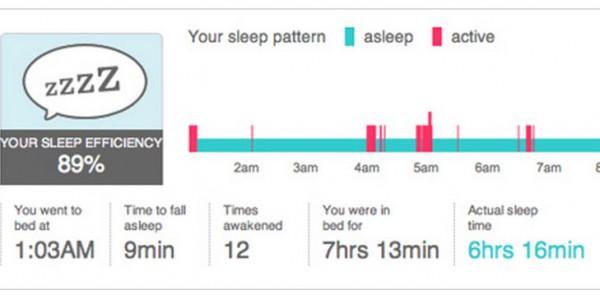It comes as no surprise that measurement is key to driving results. Measurement allows for analysis and optimization, both of which are necessary to understanding what actions do and don’t work. The Fitbit, for example, allows people to monitor their calories, steps, weight and sleep, producing numbers they can use to improve their diet, physical activity and sleep habits.

The case is the same with PR campaigns. Measuring them identifies specific points where they can be improved and changed and made to produce the desired results. Such results are bottom line ones; gone are the days of “fluff” metrics like the advertising value equivalency (AVE) or pushing stories to each and every outlet no matter how germane to the brand.
Today is the day of measurement and understanding what channels and content drive the most traffic, engagement, and sales. It’s also the day of monitoring real time trends and responding with relevant, timely stories.
Want to know the State of PR in 2014? Get your free report now!
How do you begin to measure your PR efforts? Follow these steps
1. Commit to measurement
You can even make a public commitment by pledging to uphold the PR standards set forth by the Coalition for Public Relations Research Standards.
2. Define your target audience
 What stories will resonate with your brand’s customers? What stories are pertinent to the news outlets or bloggers and journalists you’re pitching? What material needs to be shared with employees and internal stakeholders? You have a number of audiences you’re trying to reach, but you can make it easier to do by segmenting them according to the information they want and need to know.
What stories will resonate with your brand’s customers? What stories are pertinent to the news outlets or bloggers and journalists you’re pitching? What material needs to be shared with employees and internal stakeholders? You have a number of audiences you’re trying to reach, but you can make it easier to do by segmenting them according to the information they want and need to know.
3. Assess your current efforts
Look at the activities you currently have in play. How are they affecting brand sentiment and awareness? Which ones are having more of an effect than others? What activities are driving traffic to landing pages and giving marketing and sales the leads they need?
4. Start testing

If you know that your customers are more active on Twitter, see what happens when you engage more often there. Explore what types of pitches work better than others. Set up a time period in which to test, evaluate the results with a tool like the Vocus PR Suite, and fine-tune your efforts.
5. Monitor conversations
If you want your PR campaigns to have more of an impact on bottom line results, you have to stay abreast of real time trends. Newsjack those trends when you can by developing content for certain scenarios. For example, if you have stories specific to the holidays or an event, hold onto them and pitch them when both the time and situation are right. Responding in real time isn’t easy to do, but practice and preparation does make progress. You’ll see your story acceptance rate go up as you practice pitching and sharing relevant, timely content.
6. Automate mundane tasks
Marketing automation tools and the Vocus PR Suite can help rid you and your department of repetitive and sometimes unnecessary labor, giving you the time, budget, and manpower to do the work that matters.
Want to drive more bottom line results this year? Measure your PR efforts with the Vocus PR Suite!
Images: Todd Huffman, Hans Splinter, geralt, Peyri Herrera (Creative Commons)![]()


